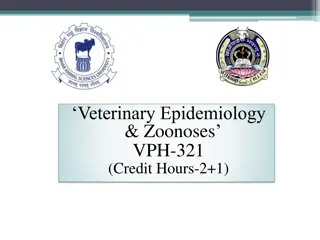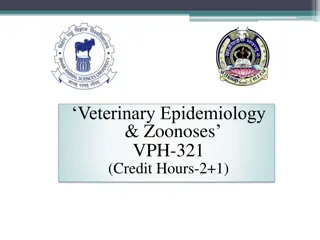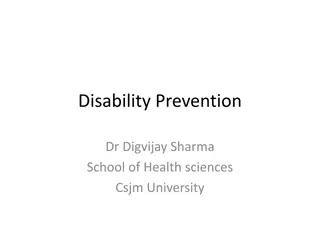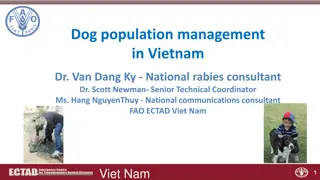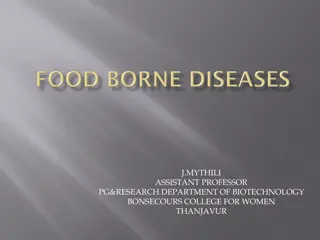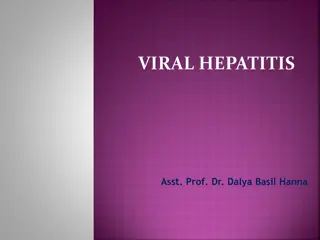Understanding Rabies: Causes, Symptoms, and Prevention
Rabies is an acute and highly fatal viral disease of the central nervous system, caused by Lyssavirus type 1. It is a zoonotic disease that affects warm-blooded animals such as dogs, cats, bats, racoons, skunks, and foxes. The disease is primarily transmitted to humans through the bite of a rabid animal, although non-bite exposures can also occur. Prevention measures include wearing protective gear, pre-exposure and post-exposure prophylaxis, and proper wound care. Treatment for rabies remains challenging, with supportive care being the mainstay approach due to the lack of established treatment options.
Download Presentation

Please find below an Image/Link to download the presentation.
The content on the website is provided AS IS for your information and personal use only. It may not be sold, licensed, or shared on other websites without obtaining consent from the author. Download presentation by click this link. If you encounter any issues during the download, it is possible that the publisher has removed the file from their server.
E N D
Presentation Transcript
RABIES RABIES
EPIDEMIOLOGY Acute rapid progressive & highly fatal viral disease of CNS caused by Lyssavirus type 1. Zoonotic disease of warm blooded animals (dogs, cats , bats, racoons, skunks, foxes ) Transmitted to man by bite of rabid animal. Non-bite exposures : aerosols; generated in labs , caves with bats , corneal transplantation. Human to human transmission extremely rare. Worldwide endemic canine rabies : 55,000 deaths annually ( India alone 20,000 ) Louis Pasteur and Emile Roux first developed rabies vaccine in 1885.
TREATMENT No established treatment. Isolation in quiet room ( as bright light , noise , cold draughts precipitates spasms / convulsions) Sedatives to relieve anxiety. Hydration. Intensive respiratory & cardiac support
PREVENTION Health personnel should wear face masks, gloves, goggles, & aprons (saliva, vomits, tears, urine or other body fluids of rabies patient contain virus ) Persons having bruises , cut or open wounds not entrusted to look after patient. Pre-exposure prophylaxis. Post exposure prophylaxis.
POST EXPOSURE PROPHYLAXIS Local wound care ( all bite wounds/scratches washed with soap and water ) reduces chances up to 80%. Devitalised tissues debrided. prophylaxis given. Suturing delayed( if necessary done after 24-48 hours later ) Antibiotic treatment whenever indicated. Active immunisation by Rabies vaccine. Passive immunisation by Human Rabies Immuno Globulins (HRIG ) Tetanus






